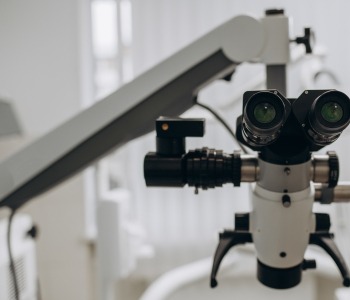
Endodontics
This clinical case from Jenner O. Argueta Zepeda explores BioRoot® RCS as a reliable bioceramic material for root canal obturation…
10 minute read
Prof. Stéphane Simon
The aim of the present study was to describe a case of endodontic retreatment in a mandibular molar with symptomatic apical periodontitis.

The traditional single cone technique is still very popular among practitioners being quick and easy to perform. This technique consists in by employing a single cone with a large amount of sealer, which acts as a filling material. Unfortunately, the currently used sealers are poorly resistant to dissolution. As a consequence, with time, the canal is again contaminated with bacteria, leading to treatment failure and the development of an inflammatory apical lesion. Thereby, although being easy to accomplish, the single cone technique is not recommended for root canal filling (Beatty 1987; Pommelet Camps 2001).
However, the single cone technique concept may be reopened and provided new reliability with new proposed biomaterials based on bioceramics, developed in the last decades and launched on the market as root canal sealers. BioRoot® RCS is the newest endodontic root canal filling material based on tricalcic silicate materials benefiting from both Active Biosilicate Technology and Biodentine. The first provides a medical-grade level of purity and, unlike “Portland cement”-based materials, it ensures the purity of the calcium silicate content with the absence of any aluminate and calcium sulfate. BioRoot® RCS is bioactive by stimulating bone physiological processes and mineralization of the dentinal structure (Camps 2015, Dimitrova-Nakov 2015). Therefore, it creates a favorable environment for periapical healing and bioactive properties including biocompatibility (Reichl 2015), hydroxyapatite formation, mineralization of dentinal structure, alkaline pH, and sealing properties. BioRoot® RCS is indicated for the permanent root canal filling in combination with gutta-percha points and is suitable for use in single cone technique or cold lateral condensation (Camilleri 2015).
Thanks to the use of Active BioSilicate Technology which is monomer-free, there is no shrinkage of BioRoot® RCS during setting for reaching a tight seal of the root canal. Despite the similar composition in terms of viscosity and texture with a sealer, BioRoot® RCS must be considered as an adhesive root-filling material. A fitted gutta-percha point is firstly used as a plugger-like carrier to facilitate the flow of BioRoot® RCS into the canal space and secondly for facilitating the desobturation of the filled root canal in case of retreatment.
Sign up now and get an exclusive access to: